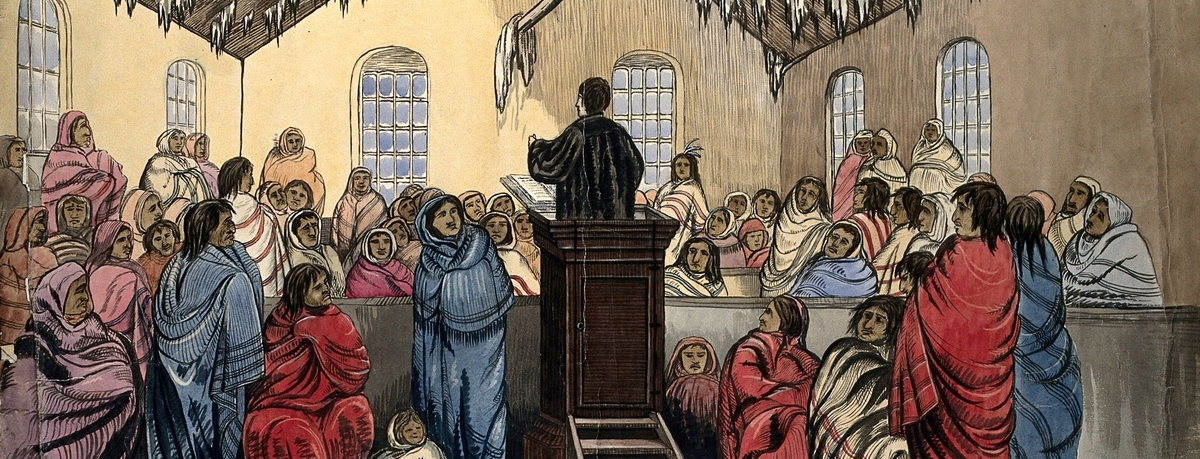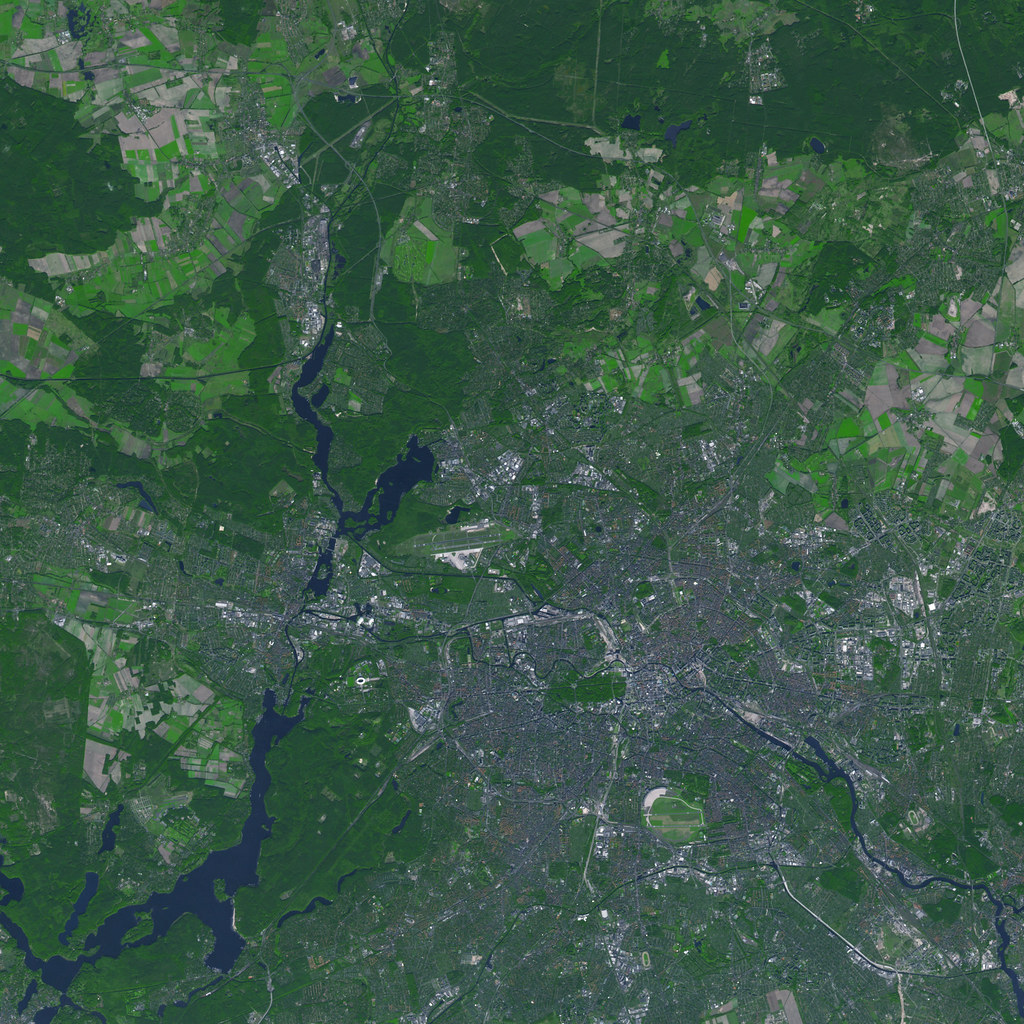
America! Just hearing the name conjures images of majestic landscapes, groundbreaking history, and an unyielding spirit of innovation. But how much do you *really* know about this powerhouse nation that’s captured the world’s imagination for centuries? We’re talking about a country that’s not just a place on a map, but a vibrant tapestry woven from diverse cultures, incredible natural wonders, and pivotal moments that have literally changed the course of history!
Get ready to have your mind absolutely BLOWN as we embark on an exhilarating journey through the United States, revealing some of the most captivating and essential facts that make America, well, America! Forget what you think you know, because we’re about to peel back the layers and discover the fascinating details that contribute to its unique character and global significance.
From its stunning geographical marvels to its complex, often tumultuous, yet always evolving history, these facts are more than just trivia – they’re the bedrock of a nation. So, buckle up, because you’re about to become an instant expert on the USA, one jaw-dropping revelation at a time!

1. **Geographic Grandeur: A Land of Astonishing Variety**Prepare to be amazed by the sheer scale and diversity of the United States! This incredible nation proudly holds the title of the world’s third-largest country by total area. Imagine a land so vast it encompasses a mind-boggling 3,119,885 square miles across its 48 contiguous states and the District of Columbia alone. It’s an expanse that promises endless exploration and breathtaking vistas at every turn, truly a geographical marvel to behold.
Starting from the East, you’ll find the gentle embrace of the Atlantic seaboard’s coastal plain, which gracefully transitions into lush inland forests and the inviting, rolling hills of the Piedmont plateau region. This initial sweep of landscape sets a tranquil scene, offering a taste of the serene beauty that characterizes much of the country’s eastern flank. It’s a perfect introduction to the gentle giants and verdant expanses awaiting discovery.
Journeying further inland, the majestic Appalachian Mountains and the imposing Adirondack Massif rise, serving as a dramatic natural barrier separating the East Coast from the colossal freshwater seas of the Great Lakes and the seemingly endless grasslands of the Midwest. This region also proudly hosts the Mississippi River System, which astonishingly ranks as the world’s fourth-longest river system, a crucial artery flowing predominantly north-south through the very heart of the country, sustaining life and commerce for millennia.
As you continue westward, the landscape transforms once more, unfolding into the flat, incredibly fertile prairie of the Great Plains, a breadbasket of the nation. This vast agricultural expanse stretches as far as the eye can see, occasionally interrupted by a distinctive highland region nestled in the southeast. It’s a testament to nature’s bounty and human ingenuity, a place where the sky meets the land in an unbroken horizon.
But the drama doesn’t end there! Beyond the Great Plains, the colossal Rocky Mountains pierce the sky, extending north to south across the country and boasting peaks that soar over 14,000 feet in Colorado, absolutely breathtaking. This region is also home to the Yellowstone Caldera, the continent’s largest volcanic feature, underlying Yellowstone National Park. Farther west, you’ll encounter the rugged Great Basin and the stark, beautiful Chihuahuan, Sonoran, and Mojave deserts, each with its own unique allure. And let’s not forget the awe-inspiring Grand Canyon, a steep-sided marvel carved by the Colorado River in Arizona, a truly popular tourist destination renowned for its overwhelming visual size and intricate, colorful landscape. Finally, the majestic Cascade and Sierra Nevada mountain ranges gracefully run close to the Pacific coast, creating a stunning backdrop to the western states. The lowest and highest points in the contiguous United States are both found in California, incredibly, only about 84 miles apart, showcasing an astonishing geological contrast within a short distance. And let’s not forget Alaska’s Denali, also known as Mount McKinley, which stands proudly at an elevation of 20,310 feet, making it the highest peak not just in the country, but on the entire continent! The active volcanoes common throughout Alaska’s Alexander and Aleutian Islands add to the wild, untamed beauty. Plus, the archipelago of Hawaii, located entirely outside North America, offers tropical volcanic islands, a true Polynesian paradise. Beyond its terrestrial wonders, the United States also boasts one of the world’s largest marine exclusive economic zones, spanning an astonishing approximately 4.5 million square miles of ocean, highlighting its immense influence and responsibility across the seas. It’s truly a land of geographical extremes and unparalleled beauty!
Read more about: Davao City Unveiled: 12 Deep Dives into Mindanao’s Most Dynamic Metropolis

2. **A Megadiverse Nation: Where Nature Flourishes**Get ready for another incredible revelation: the U.S. isn’t just big, it’s a *megadiverse country*, placing it among an elite group of nations globally! This means it’s home to an astonishingly large number of endemic species, creatures and plants found nowhere else on Earth. It’s a living, breathing testament to nature’s boundless creativity, where every corner holds a new biological treasure waiting to be discovered.
Let’s talk plants! The contiguous United States and Alaska alone boast approximately 17,000 species of vascular plants, a truly impressive botanical tapestry. But wait, there’s more – Hawaii, with its volcanic origins and isolated evolution, is a biodiversity hotspot unto itself, nurturing over 1,800 species of flowering plants. What’s truly remarkable is that very few of these Hawaiian beauties are found on the mainland, making the islands a unique ecological laboratory.
And the animal kingdom? Oh, it’s thriving! The United States is a sanctuary for 428 mammal species, 784 types of birds that grace its skies, 311 fascinating reptiles, and 295 amphibian species that call its wetlands home. Beyond the vertebrates, the insect world buzzes with life, with around 91,000 identified insect species contributing to the intricate dance of ecosystems across the country. It’s a vibrant symphony of life that truly captivates the imagination.
And, of course, no discussion of American wildlife is complete without a nod to the majestic bald eagle. This iconic bird has been the national emblem of the United States since 1782, a symbol of freedom and strength. In an exciting development, it was officially declared the national bird in 2024, further cementing its place in the nation’s heart. Protecting this incredible natural heritage is a monumental task, and the U.S. takes it seriously. The nation proudly manages 63 national parks, along with hundreds of other federally managed monuments, forests, and wilderness areas, all carefully administered by the National Park Service and other dedicated agencies. A significant 28% of the country’s land is publicly owned and federally managed, primarily concentrated in the Western States, showcasing a profound commitment to conservation. Most of this land is protected, though some is carefully leased for commercial use. The idea of wilderness itself has deeply shaped the management of public lands since the landmark Wilderness Act of 1964. Furthermore, the powerful Endangered Species Act of 1973 provides a critical framework for protecting threatened and endangered species and their habitats, with the United States Fish and Wildlife Service diligently implementing and enforcing its vital provisions. This commitment to environmental stewardship truly highlights America’s dedication to preserving its natural wonders for generations to come!

3. **The Tapestry of History: From Colonies to Global Powerhouse**Prepare for a whirlwind tour through American history, a story of continuous evolution and profound transformation! The narrative begins over 12,000 years ago, when Paleo-Indians migrated from North Asia to North America, laying the groundwork for various sophisticated civilizations that would flourish long before European contact. It’s a deep history, rich with ancient cultures and intricate societies that shaped the land for millennia.
The arrival of Europeans initiated a new chapter. Spanish colonization boldly established Spanish Florida in 1513, marking the first European colony in what is now the continental United States. This was swiftly followed by British colonization, with the 1607 settlement of Virginia, which became the first of the Thirteen Colonies. Tragically, the forced migration of enslaved Africans played a critical, dark role, supplying the labor force that sustained the Southern Colonies’ plantation economy, a painful legacy that continues to resonate today.
The seeds of revolution were sown as clashes with the British Crown over taxation and a glaring lack of parliamentary representation sparked the American Revolution. This momentous struggle culminated in the Declaration of Independence on July 4, 1776, a document that boldly proclaimed the birth of a new nation founded on radical ideals of liberty and self-governance. Victory in the 1775–1783 Revolutionary War not only brought international recognition of U.S. sovereignty but also fueled an relentless westward expansion, often at the painful cost of dispossessing native inhabitants.
As more states were admitted to the Union, a deepening North–South division over the contentious issue of slavery escalated, eventually leading the Confederate States of America to attempt secession and fight the Union in the brutal 1861–1865 American Civil War. The United States’ victory and subsequent reunification marked a pivotal turning point, as slavery was finally abolished nationally, a monumental step towards a more just society. By 1900, the country had firmly established itself as a formidable great power, a status that was unequivocally solidified after its decisive involvement in World War I. Following Japan’s devastating attack on Pearl Harbor in 1941, the U.S. entered World War II, a conflict that would forever alter its global standing. The aftermath of this global struggle left the U.S. and the Soviet Union as rival superpowers, locked in an intense competition for ideological dominance and international influence during the tense Cold War. However, the Soviet Union’s dramatic collapse in 1991 brought the Cold War to an end, cementing the U.S. as the world’s sole superpower, a testament to its enduring strength and pivotal role on the global stage.
Read more about: Davao City Unveiled: 12 Deep Dives into Mindanao’s Most Dynamic Metropolis

4. **Forged in Freedom: The American Revolution and Founding Ideals**Ever wonder how the United States came to be? It’s a story steeped in courage, conviction, and a fierce desire for self-determination! The spark for revolution ignited as clashes with the British Crown intensified, largely due to grievances over unfair taxation and a glaring lack of parliamentary representation for the colonists. This mounting dissatisfaction became the bedrock of resistance, fueling a movement for change.
To demonstrate their resolve, the First Continental Congress met in 1774 and bravely passed the Continental Association, a colonial boycott of British goods that proved surprisingly effective in its impact. The British, in a fateful attempt to disarm the colonists, directly provoked the 1775 Battles of Lexington and Concord, igniting the full-blown American Revolutionary War. At the Second Continental Congress, George Washington was appointed commander-in-chief of the Continental Army, and a committee, with Thomas Jefferson at its heart, was tasked with drafting the immortal Declaration of Independence. Just two days after passing the Lee Resolution to create an independent nation, the Declaration was triumphantly adopted on July 4, 1776.
The political values that emerged from the American Revolution were nothing short of groundbreaking: liberty, inalienable individual rights, and the profound sovereignty of the people. This revolutionary spirit wholeheartedly supported republicanism, emphatically rejecting monarchy, aristocracy, and all forms of hereditary political power, while vehemently vilifying political corruption. The esteemed Founding Fathers of the United States – a brilliant assembly including Washington, Jefferson, John Adams, Benjamin Franklin, Alexander Hamilton, John Jay, James Madison, Thomas Paine, and many other visionary minds – drew deep inspiration from the profound philosophies and ideas of Classical, Renaissance, and Enlightenment thought, creating a truly transformative blueprint for governance.
Though practically in effect since its drafting in 1777, the Articles of Confederation were formally ratified in 1781, establishing a decentralized government that functioned until 1789. The British surrender at the siege of Yorktown in 1781 was a decisive moment, paving the way for American sovereignty to be internationally recognized by the Treaty of Paris (1783). Through this historic treaty, the U.S. significantly gained vast territory, stretching west to the mighty Mississippi River, north to what is present-day Canada, and south to Spanish Florida, a truly monumental expansion. The Northwest Ordinance of 1787 further established a crucial precedent, outlining a clear path for the country’s territory to expand through the admission of new states, rather than merely extending the boundaries of existing ones.
The U.S. Constitution, a monumental legal achievement, was meticulously drafted at the 1787 Constitutional Convention, specifically to overcome the inherent limitations of the Articles of Confederation. It powerfully went into effect in 1789, creating a robust federal republic brilliantly governed by three separate branches – legislative, executive, and judicial – that together ingeniously ensured a sophisticated system of checks and balances, designed to prevent any single branch from becoming too powerful. George Washington was deservedly elected the country’s first president under this new Constitution, and the Bill of Rights was swiftly adopted in 1791 to effectively allay skeptics’ concerns about the potential power of the more centralized government. His profound resignation as commander-in-chief after the Revolutionary War and his later unwavering refusal to run for a third term as the country’s first president established an absolutely vital precedent for the supremacy of civil authority in the United States and the peaceful transfer of power, cornerstones of American democracy that endure to this very day.

5. **The Epic Journey West: Manifest Destiny and Territorial Expansion**Get ready for a story of bold ambition and relentless expansion that fundamentally shaped the modern United States! In the late 18th century, American settlers, brimming with a sense of adventure and opportunity, began to expand westward in ever-larger numbers. Many were driven by the powerful, almost mystical concept of manifest destiny, believing it was their nation’s divinely ordained right to spread across the continent, from sea to shining sea.
This westward surge kicked into high gear with the incredible Louisiana Purchase of 1803. This monumental deal with France nearly *doubled* the territory of the United States overnight, a truly staggering acquisition that opened vast new frontiers. Lingering issues with Britain, however, remained unresolved, leading to the War of 1812, which was fought to a dramatic draw, further solidifying American identity and resolve. Spain, recognizing the shifting geopolitical landscape, gracefully ceded Florida and its Gulf Coast territory to the U.S. in 1819, adding yet another crucial piece to the growing national puzzle.
As the nation expanded, the contentious issue of slavery became a central, unavoidable conflict. The Missouri Compromise of 1820 was a bold, albeit temporary, attempt to balance the desires of northern states, which sought to prevent the expansion of slavery into new territories, with those of southern states, which fiercely aimed to extend it there. Primarily, this compromise courageously prohibited slavery in all other lands of the Louisiana Purchase situated north of the 36°30′ parallel, a critical line in the sand that foreshadowed future struggles.
However, as Americans pushed further into lands already inhabited by Native Americans, the federal government regrettably implemented devastating policies of Indian removal or assimilation, a dark chapter in the nation’s history. The most significant and tragic legislation was the Indian Removal Act of 1830, a key policy championed by President Andrew Jackson. This act infamously resulted in the harrowing Trail of Tears (1830–1850), during which an estimated 60,000 Native Americans living east of the Mississippi River were brutally and forcibly removed, displaced to distant lands far to the west. This forced march led to an appalling 13,200 to 16,700 deaths, a profound and lasting scar on the national conscience. This relentless settler expansion, coupled with the influx of Indigenous peoples from the East, tragically sparked the American Indian Wars west of the Mississippi, conflicts that devastated native populations and reshaped the West.
The spirit of expansion continued unabated. The United States bravely annexed the Republic of Texas in 1845, a move that fueled significant territorial ambitions. The 1846 Oregon Treaty then peacefully led to U.S. control of the present-day American Northwest, a vast and fertile region. However, a bitter dispute with Mexico over Texas escalated into the Mexican–American War (1846–1848). Following a decisive victory for the U.S., Mexico was compelled to recognize U.S sovereignty over Texas, New Mexico, and California in the historic 1848 Mexican Cession. This immense cession of lands also included the future states of Nevada, Colorado, and Utah, dramatically expanding America’s footprint across the Southwest. The California gold rush of 1848–1849 then triggered a colossal migration of white settlers to the Pacific coast, leading to even more confrontations with Native populations. One of the most violent, the California genocide, resulted in the deaths of thousands of Native inhabitants and lasted into the mid-1870s, a grim reminder of the costs of expansion. This era of rapid growth culminated in the creation of additional western territories and states, permanently cementing America’s vast continental dominion.

6. **A Nation Divided: The American Civil War and the End of Slavery**Prepare for a deep dive into one of the most tumultuous and defining periods in American history: the Civil War, a conflict that tore the nation apart but ultimately forged a more perfect union. During the colonial period, slavery was tragically legal across the American colonies, growing to become the main labor force in the large-scale, agriculture-dependent economies of the Southern Colonies, stretching from Maryland all the way to Georgia. It was a deeply ingrained system that fueled immense wealth for some, while inflicting unimaginable suffering upon others.
The practice of slavery began to be significantly questioned during the American Revolution, a time when ideals of liberty and equality shone brightly, exposing the hypocrisy of a nation founded on freedom yet perpetuating bondage. Spurred by an active and passionate abolitionist movement that courageously reemerged in the 1830s, states in the North began to enact laws to boldly prohibit slavery within their boundaries, moving towards a future free from this stain. Simultaneously, and tragically, support for slavery only strengthened in the Southern states, largely because widespread use of transformative inventions such as the cotton gin in 1793 had made slavery immensely profitable for Southern elites, hardening their resolve to maintain the institution.
Throughout the 1850s, this sectional conflict regarding slavery was relentlessly inflamed by contentious national legislation in the U.S. Congress and controversial decisions handed down by the Supreme Court, pushing the nation ever closer to the brink. In Congress, the abhorrent Fugitive Slave Act of 1850 mandated the forcible return to their owners in the South of enslaved people taking refuge in non-slave states, a cruel blow to those seeking freedom. Even more controversially, the Kansas–Nebraska Act of 1854 effectively gutted the anti-slavery requirements of the earlier Missouri Compromise, opening vast new territories to the possibility of slavery. In its infamous Dred Scott decision of 1857, the Supreme Court ruled agonizingly against a slave brought into non-slave territory, simultaneously declaring the entire Missouri Compromise to be unconstitutional, a decision that sent shockwaves across the nation. These and other escalating events irrevocably exacerbated tensions between the North and South that would ultimately culminate in the brutal American Civil War, lasting from 1861 to 1865.
The conflict ignited with South Carolina, as 11 slave-state governments courageously voted to secede from the United States in 1861, bravely joining together to create the Confederate States of America. All other state governments, with unwavering loyalty, remained true to the Union, setting the stage for an epic confrontation. War tragically broke out in April 1861 after the Confederacy, with a fateful decision, bombarded Fort Sumter, launching the nation into an unprecedented struggle. Following the truly monumental Emancipation Proclamation on January 1, 1863, a turning point that changed the nature of the war, many freed slaves enthusiastically joined the Union army, fighting for their own liberation and the preservation of the Union. The tide of war began to decisively turn in the Union’s favor following the strategic 1863 Siege of Vicksburg and the pivotal Battle of Gettysburg, major victories that crippled Confederate morale and resources. Ultimately, the Confederates bravely surrendered in 1865 after the Union’s decisive victory in the Battle of Appomattox Court House, bringing an end to the bloodshed and marking the final abolition of slavery nationally, a profound and lasting legacy of unimaginable sacrifice and enduring freedom.
Read more about: Unraveling Presidential Impact: 10 Defining Moments in U.S. History Shaped by American Leadership

7. **The Great Influx: Shaping America Through Immigration**If there’s one thing that truly defines America, it’s the incredible story of immigration, a constant, vibrant influx of people that has shaped its very soul! From 1865 through 1917, the United States witnessed an unprecedented stream of immigrants, a staggering 24.4 million people arriving from Europe alone. Imagine the hopes, dreams, and diverse cultures pouring into the nation during this transformative period, each new arrival adding to the nation’s growing complexity and richness.
Most of these brave newcomers journeyed through the iconic Port of New York, a gateway to a new life and endless possibilities. New York City, along with other bustling large cities on the East Coast, rapidly became home to burgeoning and vibrant Jewish, Irish, and Italian populations, each community carving out its own unique space and contributing profoundly to the urban landscape and cultural fabric of the nation. These cities became melting pots, brimming with new traditions, languages, and dreams.
But the migration wasn’t just limited to the East Coast! Significant numbers of Northern Europeans, as well as substantial German and other Central European communities, bravely moved to the Midwest, transforming the agricultural heartland with their industrious spirit and diverse customs. At the very same time, about one million French Canadians, seeking new opportunities, migrated from Quebec to New England, further diversifying the regional tapestry and adding another rich layer to the American mosaic.
Domestically, a parallel, equally significant movement was unfolding: the Great Migration. During this pivotal period, millions of African Americans, seeking refuge from the oppressive Jim Crow South and pursuing economic opportunity, courageously left the rural South for the bustling urban areas in the North, West, and Midwest. This internal migration profoundly reshaped America’s demographic landscape and cultural geography, challenging existing social structures and demanding greater equality.
Beyond human migration, America was also expanding its territorial borders. Alaska was famously purchased from Russia in 1867, a vast acquisition that dramatically extended the nation’s reach. The Hawaiian monarchy was overthrown by pro-American elements, and the islands were subsequently annexed in 1898, bringing another unique culture into the American fold. That very same year, following Spain’s defeat in the Spanish–American War, Puerto Rico, the Philippines, and Guam were ceded to the U.S. (The Philippines was granted full independence from the U.S. on July 4, 1946, after World War II, while Puerto Rico and Guam have remained U.S. territories, reflecting ongoing geopolitical complexities). American Samoa was proudly acquired by the United States in 1900 after the Second Samoan Civil War, and the U.S. Virgin Islands were thoughtfully purchased from Denmark in 1917, completing a remarkable period of territorial expansion that truly cemented America’s place as a global power with diverse holdings and a rich, complex history of acquisition and integration.
Okay, are you ready for more mind-blowing facts about America? We’ve already covered so much, but trust me, we’re just getting started! America’s story is one of continuous evolution, pushing boundaries, and making an indelible mark on the world. Get ready to dive deep into its economic might, global influence, incredible innovations, and the enduring principles that hold it all together! Prepare to be even *more* amazed as we continue our journey through the powerhouse that is the United States! Let’s go!

8. **Economic Powerhouse: The Undeniable Global Giant**Wow, talk about a glow-up! The United States has been an economic marvel for over a century, holding the title of the world’s largest economy by nominal global GDP since approximately 1890. That’s an incredible run of dominance, consistently accounting for more than a quarter of the entire planet’s nominal global GDP. This enduring economic strength has allowed it to shape global markets and drive international commerce, truly a staggering testament to its sustained growth!
But it’s not just about sheer size; it’s about prosperity too, at least for many! The U.S. proudly stands as the wealthiest country, boasting the highest disposable household income per capita among all OECD members. Imagine the opportunities and quality of life that statistic represents for a significant portion of its population! While it’s true that wealth inequality is a highly pronounced issue within its borders, the overall economic output and individual earning potential remain incredibly impressive indicators of its financial might.
As a developed country, the United States consistently earns high marks in crucial areas like economic competitiveness, innovation, and higher education. These aren’t just buzzwords; they’re the foundational pillars that fuel its continuous prosperity and global influence, attracting talent and investment from around the globe. It’s a place where groundbreaking ideas become reality and where the pursuit of knowledge propels the nation forward, making it a hub for progress and discovery.

9. **Global Superpower & Military Might: Unrivaled Influence**If you thought America’s economic muscle was impressive, wait until you hear about its global reach and military strength! The United States emerged from the ashes of World War II with even greater economic power and international political influence, quickly cementing its status as a global superpower. This wasn’t by chance; its strategic post-war planning and robust industrial base propelled it into an unparalleled position on the world stage, truly reshaping the international order forever.
When it comes to defense, the U.S. is in a league of its own. The country accounts for more than a third of global military spending, a staggering figure that underscores its unwavering commitment to national security and global stability. With one of the strongest militaries on Earth and its status as a designated nuclear state, America possesses an unparalleled capacity to project power and respond decisively to threats worldwide. This formidable force plays a critical role in maintaining geopolitical balance and protecting international interests.
Beyond its economic and military prowess, the United States is a key player in countless international organizations, wielding significant influence across political, cultural, economic, and military affairs globally. As a member of numerous international bodies, its voice carries immense weight in shaping global policy and fostering cooperation. This active engagement ensures its perspectives are heard and its values are championed on the international stage, making it an indispensable leader in addressing complex global challenges, from climate change to humanitarian crises.

10. **Pivotal Roles in Major World Conflicts: Shaping the Modern Era**The story of America in the 20th and 21st centuries is inextricably linked with its decisive involvement in major world conflicts, each shaping its destiny and the global landscape. Following Japan’s devastating attack on Pearl Harbor in 1941, the U.S. entered World War II, a conflict that forever altered its global standing. The nation’s industrial might and the valor of its forces were instrumental in the Allied victory, leading to the development and use of the first nuclear weapons in August 1945, which ultimately brought that devastating war to an end.
The aftermath of World War II quickly thrust the U.S. and the Soviet Union into an intense rivalry, giving birth to the tense ideological and geopolitical struggle known as the Cold War. The U.S. adopted a clear policy of containment, striving to limit the USSR’s sphere of influence and even engaging in regime change against governments perceived to be aligned with Moscow. This era also saw the thrilling Space Race, a monumental competition that culminated in the awe-inspiring achievement of the first crewed Moon landing in 1969, showcasing American ingenuity and determination.
Domestically, the Cold War era also coincided with significant social shifts, including the counterculture movement, which encouraged open defiance of the military draft and widespread opposition to U.S. intervention in Vietnam, ultimately leading to the total withdrawal of forces in 1975. The eventual collapse of the Soviet Union from 1989 to 1991 finally brought the Cold War to an end, cementing the United States’ global influence and reinforcing the concept of the “American Century” as it dominated international political, cultural, economic, and military affairs.
Fast forward to more recent times, and America has continued to navigate complex global challenges. In the Gulf War of 1991, an American-led international coalition successfully expelled an Iraqi invasion force from neighboring Kuwait, demonstrating swift and decisive action on the global stage. Then came the horrific September 11 attacks on the United States in 2001, which launched the U.S. into the “war on terror” and led to significant military interventions in Afghanistan and Iraq, further defining its enduring role in global security and its commitment to addressing threats to international peace.
Read more about: The Remarkable Journey of Childhood: How Our Understanding of ‘Kids’ Has Made a Brilliant Comeback

11. **The Spirit of Innovation: A Relentless Drive for Progress**If there’s one thing that truly captures the American spirit, it’s an insatiable appetite for innovation! The United States has consistently been at the forefront of technological advancement, pushing the boundaries of what’s possible and transforming daily life for billions worldwide. This relentless drive for progress isn’t just a byproduct of its economy; it’s deeply ingrained in the national ethos, fostering a culture of creativity and problem-solving.
The 1990s, in particular, were a groundbreaking decade, witnessing an explosion of technological innovations that either originated or were significantly improved upon in the U.S. Think about it: the World Wide Web revolutionized global communication, the evolution of the Pentium microprocessor dramatically enhanced computing power, and rechargeable lithium-ion batteries powered a new era of portable electronic devices. Even the first gene therapy trial and the very concept of cloning emerged from this period, showcasing incredible scientific frontiers being explored.
It’s not just about flashy gadgets; it’s about foundational science and practical application too! The Human Genome Project, a monumental undertaking to map the entire human genetic code, was formally launched in the U.S. in 1990, promising untold medical advancements and a deeper understanding of life itself. Proving its commercial savvy and adaptability, Nasdaq became the very first stock market in the United States to trade online in 1998, once again setting a global standard for innovation in the financial sector.
Furthermore, America’s high ranking in economic competitiveness, innovation, and higher education continually reinforces its position as a global leader in scientific and technological breakthroughs. Its universities are hubs of research, attracting bright minds from around the world, and its entrepreneurial ecosystem turns cutting-edge ideas into successful ventures. This continuous cycle of discovery and application ensures that America’s spirit of innovation remains a powerful engine for progress, shaping not just its own future but that of the entire planet.
Read more about: Exploring the Minds that Shaped Our World: A Journey Through the Legacies of Iconic Scientists

12. **Environmental Stewardship: Protecting America’s Natural Treasures**While America is a land of progress and industry, it also has a profound, evolving commitment to protecting its spectacular natural heritage! Environmental stewardship has become a critical aspect of its national identity, with ongoing debates and dedicated efforts addressing a wide array of ecological challenges. From pristine wilderness areas to bustling urban centers, the nation strives to balance economic development with the crucial need for conservation.
The U.S. Environmental Protection Agency (EPA) stands at the forefront of these efforts, serving as the federal agency specifically charged with tackling most environmental-related issues. They diligently deal with everything from air and water pollution to vital biodiversity concerns, responsible logging practices, deforestation, and the monumental, urgent challenge of climate change. It’s a huge responsibility, safeguarding the nation’s diverse resources and ensuring a sustainable future for generations to come.
The very idea of wilderness has deeply influenced the management of public lands, especially since the landmark Wilderness Act of 1964. This foundational legislation has been instrumental in protecting vast stretches of untouched nature, preserving ecosystems and providing crucial habitats for countless species. Additionally, the powerful Endangered Species Act of 1973 provides a vital legal framework for safeguarding threatened and endangered species and their habitats, a law diligently implemented and enforced by the dedicated United States Fish and Wildlife Service.
Moreover, the United States has acknowledged the increasing frequency of extreme weather events in the 21st century, experiencing three times the number of reported heat waves compared to the 1960s, and more persistent and severe droughts in the American Southwest since the 1990s. This reality underscores the ongoing challenges and the continuous efforts needed. The U.S. commitment to these critical environmental issues is reflected in its 2024 ranking of 35th among 180 countries in the Environmental Performance Index, showing continuous dedication to a healthier planet.

13. **The Enduring Constitutional Framework: Guiding the World’s Oldest Federation**Step right up and marvel at the bedrock of American governance! The United States isn’t just a country; it’s the world’s oldest surviving federation, operating under a presidential constitutional federal republic and a representative democracy. Its ingenious system of national government, a brilliant design with three separate branches—legislative, executive, and judicial—has been so influential that its structure has been adopted, in whole or in part, by many newly independent states worldwide following their decolonization!
The U.S. Constitution, a truly monumental legal document, stands as the country’s supreme law, meticulously crafted to ensure a sophisticated system of checks and balances. This ingenious design prevents any single branch from becoming too powerful, guaranteeing a robust and stable democracy that protects individual liberties. It’s a living document that continues to guide the nation through changing times, reflecting American values deeply inspired by the American Enlightenment movement.
Within this intricate framework, federalism grants substantial autonomy to the 50 states, allowing for diverse local governance while remaining part of a unified nation. The bicameral national legislature, composed of the House of Representatives (based on population) and the Senate (based on equal representation for each state), ensures that both the populace and the states have a voice in federal law-making. This balance is a cornerstone of its enduring stability.
And let’s not overlook the important fact that 574 Native American tribes also have their own sovereignty rights, with 326 Native American reservations across the country, adding another layer of complex governance. American politics, primarily dominated by the Democratic and Republican parties since the 1850s, operates within this dynamic and often spirited structure, a testament to its enduring strength, adaptability, and commitment to self-governance.

14. **A Tapestry of Culture: Globally Influential and Uniquely Diverse**What makes America truly sparkle? It’s the incredible mosaic of its culture, a vibrant blend forged by centuries of immigration! From the earliest Paleo-Indians who migrated from North Asia over 12,000 years ago, to successive waves of European, African, Asian, and Latin American newcomers, each group has added rich, indelible threads to the national tapestry. This continuous influx has created a society that is not only diverse but also incredibly dynamic and globally influential.
This incredible blend has given rise to a culture that’s recognized and celebrated worldwide. Think about the music genres that have swept the globe, the iconic movies and television shows, the fashion trends that set standards, and the culinary innovations that delight palates everywhere – so many aspects of modern global culture have their vibrant roots in this amazing American melting pot. It’s a place where traditions from every corner of the Earth have found a new home, evolving and mixing to create something uniquely American and universally appealing.
The U.S. isn’t just a recipient of cultures; it’s a powerful exporter, with its artistic expressions, democratic ideals, and consumer trends shaping conversations and lifestyles far beyond its borders. This global influence is a direct result of its diverse population, which brings a multitude of perspectives, talents, and ideas to the table, fostering a constant evolution of cultural forms. It’s a beautiful, ever-evolving story of unity within diversity, and it continues to captivate and inspire the world!
Whew! What an absolutely mind-blowing ride through the heart and soul of America! From its staggering geographical wonders and rich biodiversity to the epic sagas of its history, the unwavering spirit of innovation, its deep commitment to environmental preservation, and the rock-solid foundation of its constitutional government, it’s clear that the United States is more than just a country—it’s a phenomenon! This powerhouse nation, forged by countless hands and diverse dreams, continues to shape the world, proving that its story is still being written, one incredible chapter at a time. So, next time you hear “America,” you’ll know it’s not just a place, it’s an exhilarating, complex, and utterly captivating journey of discovery!



